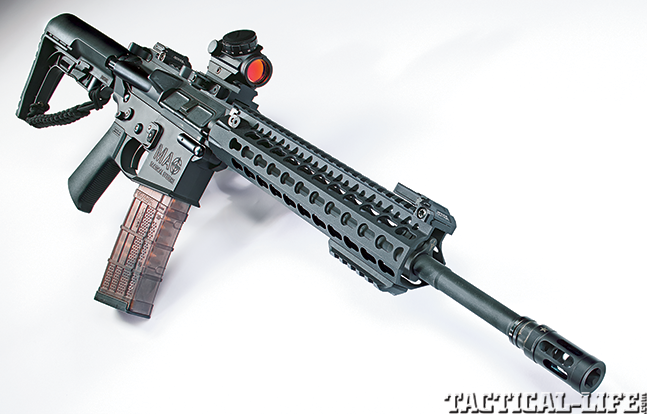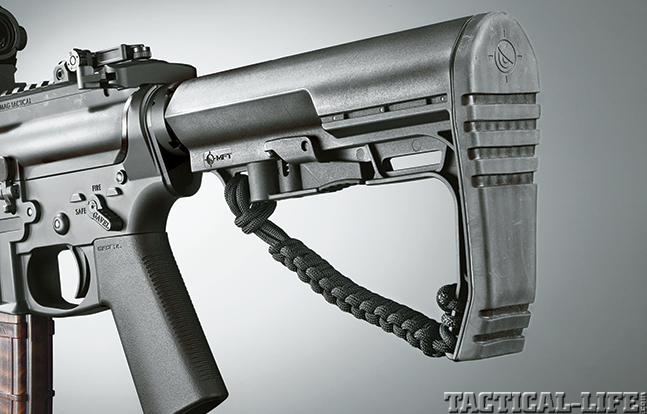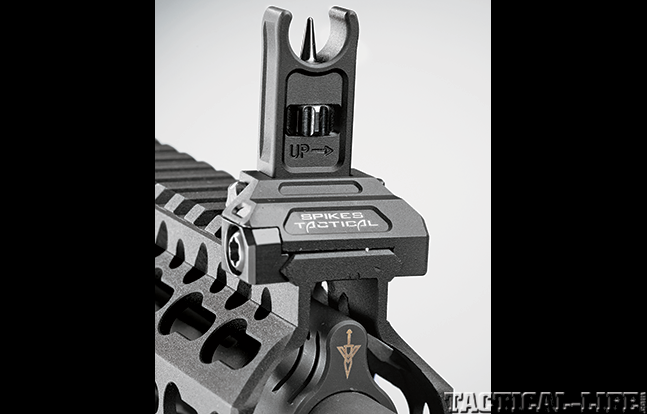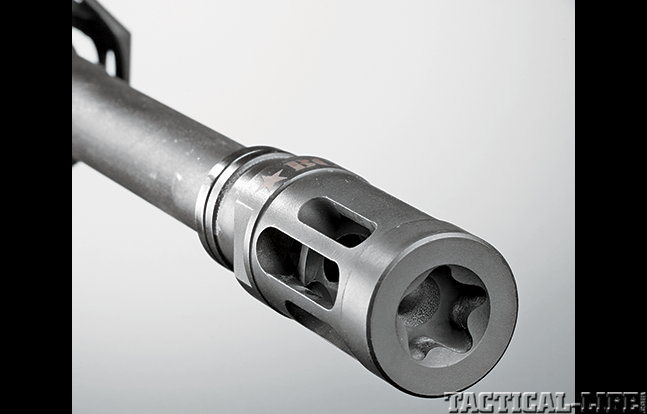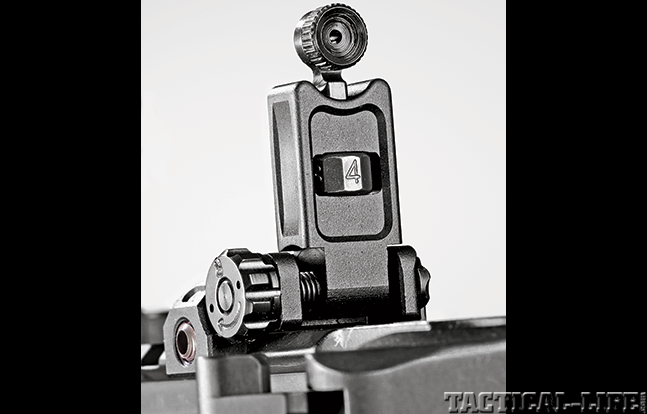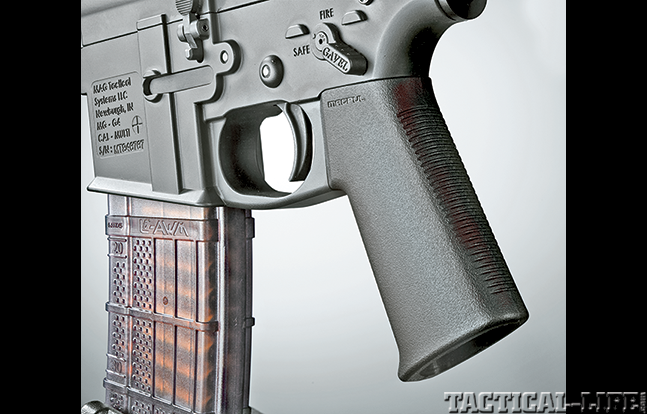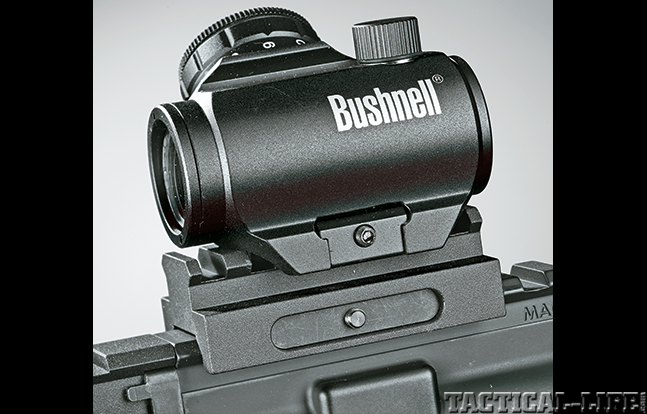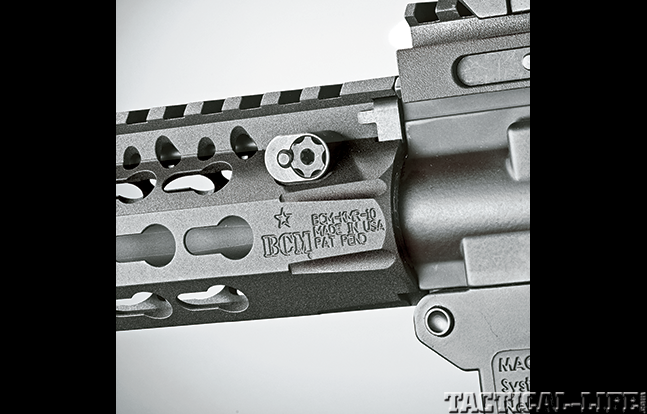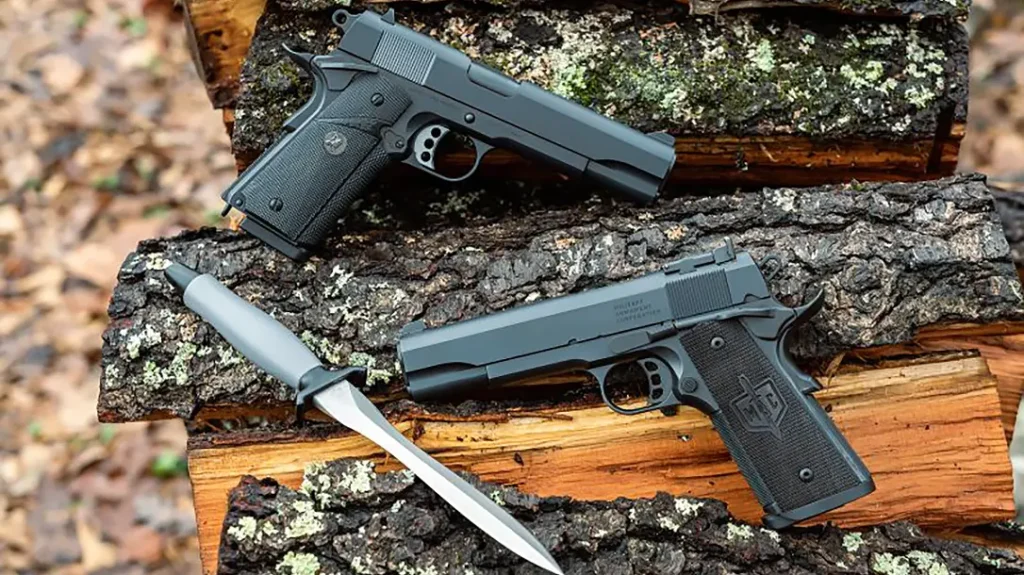The AR was designed to be a lightweight rifle, so why does mine weigh as much as an M1 Garand?
Horrible weight gain seems to be contagious and something all of my ARs and I share. Deciding it was easier to put my AR on a diet than myself, I set out to try and build the lightest, custom AR I could while avoiding the use of polymer or carbon fiber (for the most part) and maintaining all of the rifle’s functionality. I also opted to keep the maximum versatility in terms of mounting accessories and optics.
The Build
Advertisement — Continue Reading Below
I started by individually weighing parts from dozens of manufacturers, selecting only the highest-quality and lowest-weight components. The upper (4.8 ounces) and lower (5.8 ounces) receivers are made by MAG Tactical Systems and weigh 35 percent less than standard aluminum receivers. The difference is that these parts are made from a proprietary magnesium alloy and Cerakoted for corrosion resistance.
The lower receiver also features an enlarged integral triggerguard for use with gloves, a reinforced front takedown pin as well as trigger and hammer pin holes with extended pins included. MAG Tactical sells the upper receiver assembled with the dust cover and forward assist. Magnesium is the lightest metal used for any structural purposes, but it lacks the strength of aluminum. By producing an alloy you get the benefits of both weight reduction and strength.
I opted for a mid-length gas system for reliability and recoil reduction, although a carbine-length gas tube would technically shave a few grams. I used a Spike’s Tactical nitride-coated mid-length gas tube with the VLTOR low profile set screw gas block (1.4 ounces). This gas block is made from 17-4 pH stainless steel and comes with a black oxide finish; it fits easily under any handguard system and features lightening cuts along both sides.
Advertisement — Continue Reading Below
For the barrel I had several choices, but it came down to the Adams Arms Evo Ultra Lite VooDoo Barrel (21.9 ounces and fully Melonited), or the Bravo Company MFG (BCM) lightweight, cold-hammer-forged barrel (20.6 ounces). Both barrels are pencil thin, 14.5 inches in length with 0.625-inch gas blocks and feature M4 feed ramps, 4150 CMV steel and a 1-in-7-inch twist rate. The BCM barrel has a chrome-lined bore and chamber, is HPT/MP inspected and has a Parkerized manganese-phosphate finish. It is also lightly fluted, which accounts for some of the weight difference and why it was my ultimate choice.
The short barrel necessitated a pinned and welded muzzle device for a legal length, and I selected the BCM Gunfighter Compensator Mod 1. At 2.6 ounces, I could have found a lighter one, but here functionality won out. The stainless steel BCM compensator is also an effective flash suppressor, and the design reduces recoil and muzzle rise as well as the usual noise and concussive side pressure normally associated with compensators. It was also conveniently press drilled for permanent installation.
Leaving the barrel free floating was also an important consideration for improved accuracy. I also wanted a metal handguard with a full-length Picatinny rail on top and multiple rail options for accessories. The BCM KMR 10-inch handguard was ideal. Like the upper and lower receiver, it is also made from a magnesium alloy and weighs an incredible 4.1 ounces. Very thin and skeletonized, it features a KeyMod rail system for attaching rail sections at 45-degree increments for a total of seven positions around the handguard. I also used the BCM Gas Buster mid-length charging handle.
Advertisement — Continue Reading Below
The stock is another area where weight reduction can be achieved, but again I wanted to maintain the maximum functionality. The new Mission First Tactical BattleLink Minimalist Stock (5.8 ounces) was ideal and is the lightest six-position tactical stock you can get. Made from reinforced polymer, it has a very thin profile and “L” shape with a rubber buttpad, ambidextrous quick-detach sling attachment point and is very ergonomic and comfortable. I also added Mission First’s cobra braid to prevent the L-shaped stock from catching on anything and giving it more of a standard triangle profile as well as the added benefit of having para cord handy. The Mission First stock fits very snugly on the mil-spec buffer tube (smaller and lighter than a commercial buffer tube) with no play at all.
I weighed several pistol grips as well and found that the absolute lightest is the Magpul MOE-K Grip (1.9 ounces). This is a very narrow grip with no storage space or any extra material for the web of the hand. The low-profile grip was designed with a steeper grip angle for PDW use, but it fit well and is comfortable with an aggressive texture for a firm grip. I also opted for the Magpul 30-round polymer PMAG, which I have found to be unfailingly reliable.
I did not weigh the final rifle with sights or a magazine, but I did end up installing the new fully adjustable Spike’s Tactical Billet Micro front and rear sights (1.8 ounces, combined). These are the lightest metal back-up sights you can get, and on my scale they are also lighter than any polymer sights I had. They are incredibly low profile and compact, and they flip up and down easily. The aperture is HK style and very sharp. Weight savings comes for the CNC 7075-T6 billet construction and the use of hollow titanium cross bolts.
Advertisement — Continue Reading Below
I am a big fan of ambidextrous safety selectors but feared this would add extra weight. The Ares Armor Gavel Ambidextrous Safety Selector is made from polymer (the inside component is steel) and actually weighs less than a standard GI safety selector. It also offers a more convenient and natural 55-degree throw and a shorter lever on the right side of the receiver.
For maximum weight reduction, I went after the internal components of the rifle as well. The Rubber City Armory Low Mass Bolt Carrier Group (8.8 ounces) is heavily skeletonized and shaves almost 25 percent off the weight of a standard bolt carrier group. It is also fully functional with the forward assist and dust cover made from 8620 steel; the black-nitride coating provides superior corrosion and wear resistance and lubricity. It also features an enhanced bolt and stainless steel firing pin and gas key.
I used a lightweight mil-spec buffer (3 ounces) and the DPMS Receiver LowerParts Kit. V7 Weapon Systems specializes in making small lightweight parts for the AR from 7075-T6 aluminum.
Advertisement — Continue Reading Below
Range Time
On the range it not only functioned flawlessly but it also proved to have outstanding accuracy with minimal recoil. I installed the Bushnell TRS-25 HiRise red-dot sight, which features a 3-MOA dot and 11 brightness settings, making the dot visible in all light conditions.
Building your own AR is not difficult, but I relied on the expert gunsmiths at Sterling Arsenal in Sterling, Va., who turned a haphazard box of parts into a work of art. The end result is a rifle that empty weighs only 4.75 pounds. I am confident that I could have gone lighter and that an all metal fully functional AR can be had at 4.5 pounds. MAG Tactical produces its own less-than-pencil-thin barrels that would get you there. Keep in mind that the lightest commercial AR ever built was the 3.9 pounds— the Professional Ordnance Carbon 15—and was almost all carbon fiber.
Advertisement — Continue Reading Below
